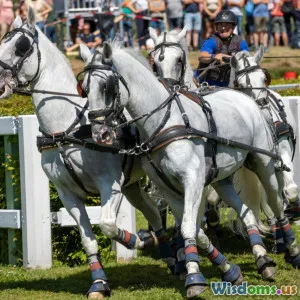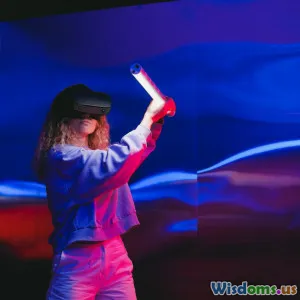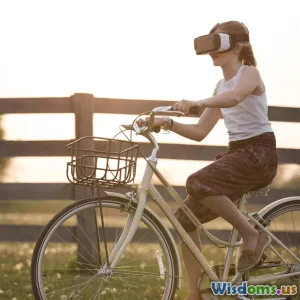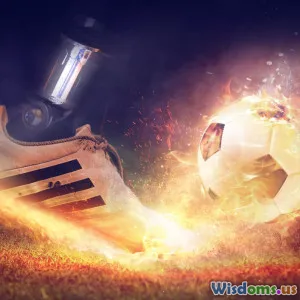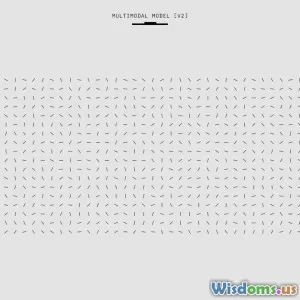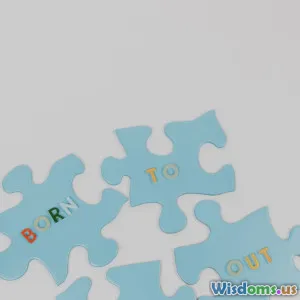
Will AI Generated Art Change the Face of Game Design Forever
9 min read Explore how AI-generated art is revolutionizing game design, transforming creativity, efficiency, and player experience forever. (0 Reviews)
Will AI-Generated Art Change the Face of Game Design Forever?
In the ever-evolving world of entertainment and gaming, artistic innovation plays a critical role in defining player engagement and immersion. Imagine if the next blockbuster game environment or character art could be created not by hours of manual labor from thousands of artists but by advanced Artificial Intelligence pushing boundaries. This transformation is no longer futuristic speculation—it’s unfolding now. AI-generated art promises to revolutionize game design, enhancing creativity, reducing costs, and accelerating development cycles. But what does this change truly mean for the industry?
The Dawn of AI in Game Art Creation
Game art has traditionally been a craft rooted deeply in human creativity. From sprite pixel art in retro classics to photorealistic textures in AAA titles, extensive artistic vision and manual effort have been foundational. However, AI-powered tools like DALL·E 2, Midjourney, and Stable Diffusion are enabling developers to generate complex visuals, characters, and even entire environments based on simple text descriptions or minimal input.
How AI Creates Art Today
Unlike traditional asset creation, where artists render every detail, AI models trained on millions of images learn patterns, colors, and shapes, synthesizing new artworks on demand. For example, a designer can input "ancient ruined temple bathed in twilight with mystical runes" and receive a detailed, creative scene concept instantly.
The ability for instantaneous iteration—not only of visual style but also diverse thematic variations—provides a powerful toolset. This streamlines brainstorming, enabling teams to experiment vastly with aesthetics that previously demanded weeks or months.
Impact on Game Design Workflow
Speed and Efficiency
One of the biggest immediate impacts of AI-generated art is the speed it brings to game development pipelines. According to a survey by Game Developer Magazine (2023), studios using AI art tools reported up to a 40% reduction in the pre-production phase, particularly in concept art and environment prototyping.
For indie teams or smaller developers with limited resources, this democratizes access to high-quality visuals. Instead of hiring large art teams, they can focus on design and narrative development while AI supplements asset creation.
Cost Reduction
Creating polished art assets is one of the most resource-intensive parts of game development, often consuming a significant portion of budget. Integrating AI can reduce costs, enabling studios to reallocate funds toward gameplay innovation, marketing, or bigger world-building projects.
Enabling Creative Risk-Taking
With AI reducing laborious art production requirements, designers can push boundaries both visually and narratively. They might blend unexpected art styles or generate surreal in-game landscapes that defy physical constraints.
For instance, developers have experimented with AI-generated surreal environments that evolve dynamically, such as shifting dreamscapes or alternate realities, enhancing player immersion and experience.
Challenges and Ethical Considerations
Despite its potential, AI-generated art in games faces challenges:
Quality Control and Artistic Authenticity
AI-generated images occasionally produce uncanny or flawed visuals requiring substantial human curation. Maintaining a consistent art style — especially for story-driven games — entails careful oversight.
Copyright and Ownership
The use of AI trained on existing artworks raises legal questions. Where do the rights to AI-generated artwork belong? Some countries or studios have begun formulating policies, but uncertainty remains.
Notably, art communities have voiced concern that AI models often borrow elements from artists’ work without credit, raising ethical dilemmas.
Impact on Artists
While AI assists by handling repetitive tasks, some fear job displacement among game artists. However, experts emphasize that AI is most effective as a creative collaborator rather than a replacement. Human artists bring imagination, emotional depth, and cultural context that AI cannot authentically replicate.
Real-World Examples Transforming Game Design
Ubisoft’s Use of AI for Procedural Content
Ubisoft has integrated AI-driven tools to generate expansive, detailed game worlds rapidly, leveraging AI art to enhance textures and environmental details, enriching open-world experiences without exponentially increasing artistic labor.
AI Art in Indie Games
Indie titles like AI Dungeon have incorporated AI to generate dynamic, story-driven visuals. This empowers players with personalized experiences as the art dynamically adapts with narrative evolution.
Unity and Unreal Engine AI Plugins
Leading game development engines now offer AI plugins facilitating on-the-fly asset creation and customization. This integration enables developers to enhance visuals while maintaining seamless workflow compatibility.
The Future of AI and Game Design
Looking ahead, AI-generated art is likely to become integral to many game development stages.
- Adaptive Art Generation: Imagine games where environments or characters evolve visually based on player choices, with AI-generated assets customizing experiences in real time.
- Enhanced Player-Created Content: Player mods or creations could be vastly augmented through AI, raising community engagement to unprecedented heights.
- Hybrid Human-AI Creativity: The future will likely emphasize collaboration, combining human artistic intuition with AI’s generative power, ushering in new creative paradigms.
As game design incorporates AI-generated art more deeply, it challenges traditional roles but also opens unparalleled avenues for creativity, accessibility, and innovation.
Conclusion
AI-generated art stands poised to profoundly change the face of game design forever. By accelerating creation processes, democratizing access to high-quality visuals, and pushing artistic boundaries, it offers remarkable opportunities to redefine player experience. Yet this transformation demands careful balancing of ethical concerns, quality control, and the irreplaceable human creative spirit.
For game developers, embracing AI art technologies thoughtfully can yield an exciting competitive edge, fostering games that are not just visually stunning but dynamically alive and responsive. For players and fans, it hints at an era of richer, more immersive digital worlds.
Ultimately, AI-generated art is not a replacement for human creativity but a powerful partner — one with the potential to elevate game design into uncharted territories of imagination and innovation.
Sources & Further Reading:
- Game Developer Magazine, AI Integration Survey, 2023
- Ubisoft Developer Insights on AI Procedural Tools, 2023
- Indie Game Dev Case Study: AI Dungeon Art Adaptation, 2022
- Legal Review: AI Copyright Implications in Art, 2023
Author’s Note: The technological tide is shifting. Whether you are a game designer, artist, or enthusiast, staying informed about AI’s role today ensures you are part of shaping tomorrow’s digital frontiers.
Rate the Post
User Reviews
Popular Posts











